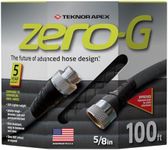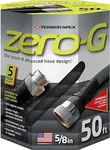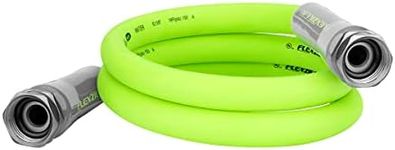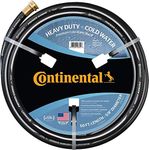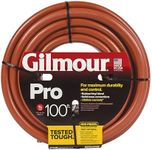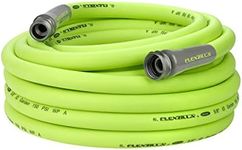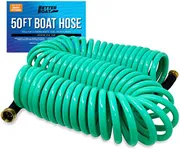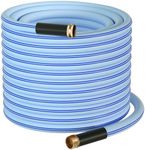Buying Guide for the Best Garden Hose
Choosing the right garden hose can make your gardening tasks much easier and more efficient. A good garden hose should be durable, flexible, and suitable for your specific watering needs. When selecting a garden hose, consider factors such as length, diameter, material, flexibility, and fittings. Understanding these key specifications will help you make an informed decision and ensure that you get a hose that meets your requirements.LengthThe length of a garden hose determines how far it can reach from the water source. This is important because you want to ensure that the hose can cover the entire area you need to water without being too short or excessively long. Garden hoses typically come in lengths ranging from 25 to 100 feet. For small gardens or patios, a 25-50 foot hose may be sufficient. For larger yards, you might need a 75-100 foot hose. Measure the distance from your water source to the farthest point you need to reach to determine the appropriate length for your needs.
DiameterThe diameter of a garden hose affects the water flow rate. A larger diameter allows more water to flow through the hose, which can be beneficial for tasks that require a lot of water, such as filling a pool or watering a large garden. Common diameters are 1/2 inch, 5/8 inch, and 3/4 inch. A 1/2 inch diameter is suitable for light watering tasks and small gardens. A 5/8 inch diameter is the most versatile and commonly used size, providing a good balance of water flow and pressure. A 3/4 inch diameter is ideal for heavy-duty tasks and large areas. Choose the diameter based on the volume of water you need and the pressure available from your water source.
MaterialThe material of a garden hose affects its durability, flexibility, and weight. Common materials include vinyl, rubber, and reinforced hoses. Vinyl hoses are lightweight and inexpensive but may not be as durable or flexible as other options. Rubber hoses are more durable and flexible, making them suitable for heavy-duty use, but they can be heavier and more expensive. Reinforced hoses have additional layers of mesh or fabric to increase strength and prevent kinking. Consider the frequency and intensity of your use when choosing the material. For occasional light use, a vinyl hose may suffice. For regular or heavy-duty use, a rubber or reinforced hose is a better choice.
FlexibilityFlexibility is important for maneuvering the hose around your garden without it kinking or tangling. A more flexible hose is easier to handle and store. However, too much flexibility can sometimes lead to kinking. Hoses made from rubber or reinforced materials tend to offer a good balance of flexibility and kink resistance. When choosing a hose, consider how often you will need to move it around and how easy it is to handle. If you need to navigate around obstacles or frequently move the hose, opt for one with good flexibility and kink resistance.
FittingsFittings are the connectors at the ends of the hose that attach to the water source and nozzle. They are typically made of plastic or metal. Metal fittings, usually brass, are more durable and provide a better seal than plastic fittings, which can crack or break over time. When choosing a garden hose, look for fittings that are sturdy and well-made. If you plan to use the hose frequently or for heavy-duty tasks, metal fittings are a better choice. Ensure that the fittings are compatible with your water source and any attachments you plan to use.
